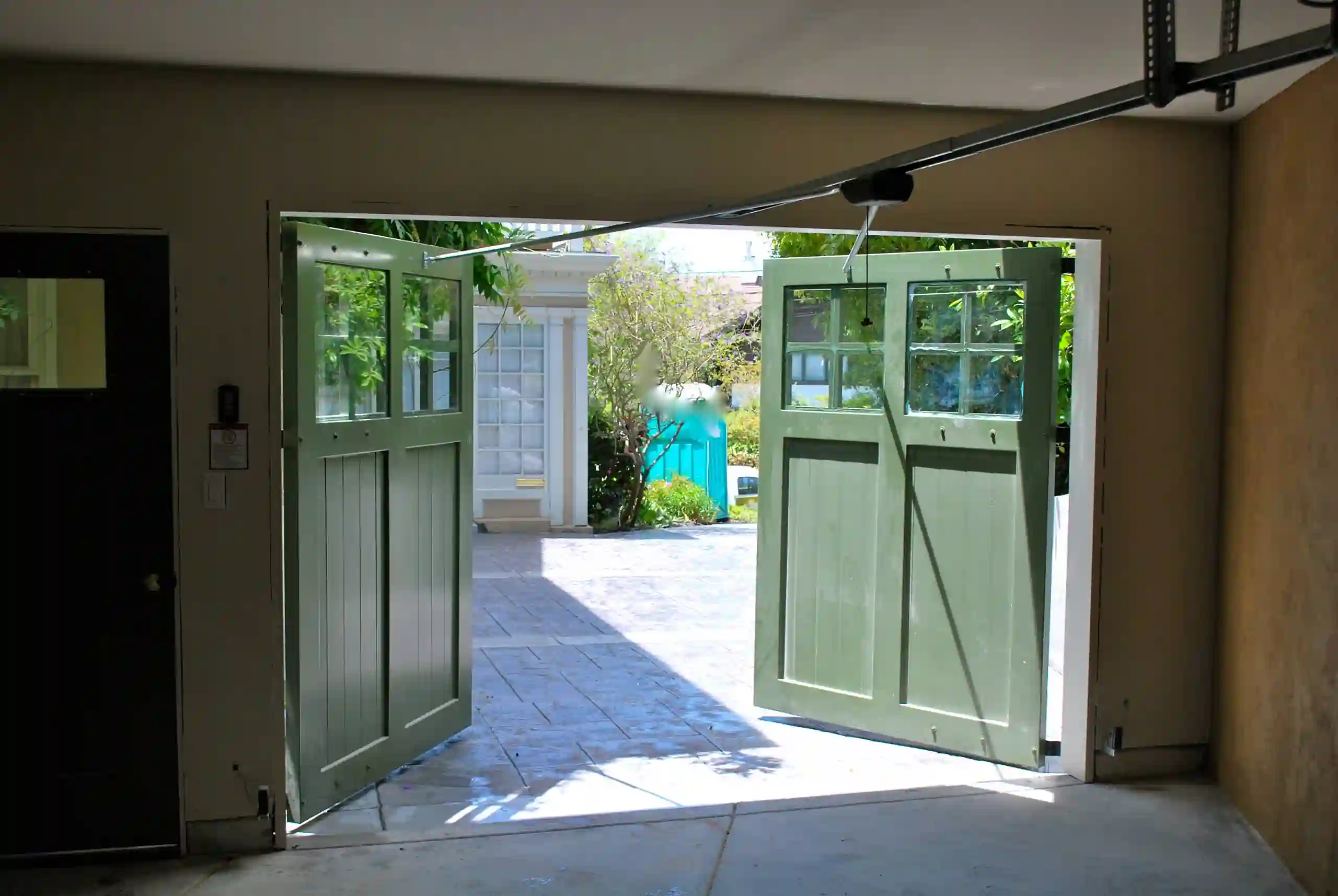If you’ve ever stood in your driveway and really looked at your garage door, you might realize it’s more than just a barrier for your car. It’s this huge, visible piece of your home’s façade — almost like a smile, or sometimes a frown, depending on the style. And that’s why so many homeowners have been rethinking their options lately.
One style in particular, Swing Out Garage Doors, has been making a comeback. Honestly, it feels a bit surprising at first, because weren’t these the “old-timey” doors you’d see on barns or carriage houses? But then you notice how they’ve been reimagined, blending classic lines with modern touches, and suddenly they don’t look outdated at all.
What sets swing out doors apart from the usual roll-up garage doors is their personality. Instead of folding overhead like a machine part, they swing open wide, almost like arms stretching out to welcome you home. There’s this simple elegance in the way they work, and for some people, that’s enough reason to choose them over overhead doors.
But for others, it’s also about durability, insulation, or even just the sense of heritage they carry. You know that warm, vintage look — like you’re walking up to a storybook carriage house? That’s the vibe.
So why now? Why are people shifting back to this older style? Maybe it’s nostalgia, maybe it’s design trends circling back, or maybe it’s just the way modern garage door companies have made them practical again. With things like automated openers, insulated door panels, weatherstripping, and durable steel tubing, these doors don’t just look pretty — they actually stand up to snow, storms, and everyday use.
In the next sections, I’ll walk you through 10 secrets about swing out garage doors that every homeowner should know. Some are design insights, some are practical tips, and a few might even surprise you. By the end, you’ll see how these doors aren’t just about style — they’re a mix of tradition, efficiency, and maybe even a little bit of personality for your home.
🏡 Why Swing Out Garage Doors Are a Game-Changer for Homeowners
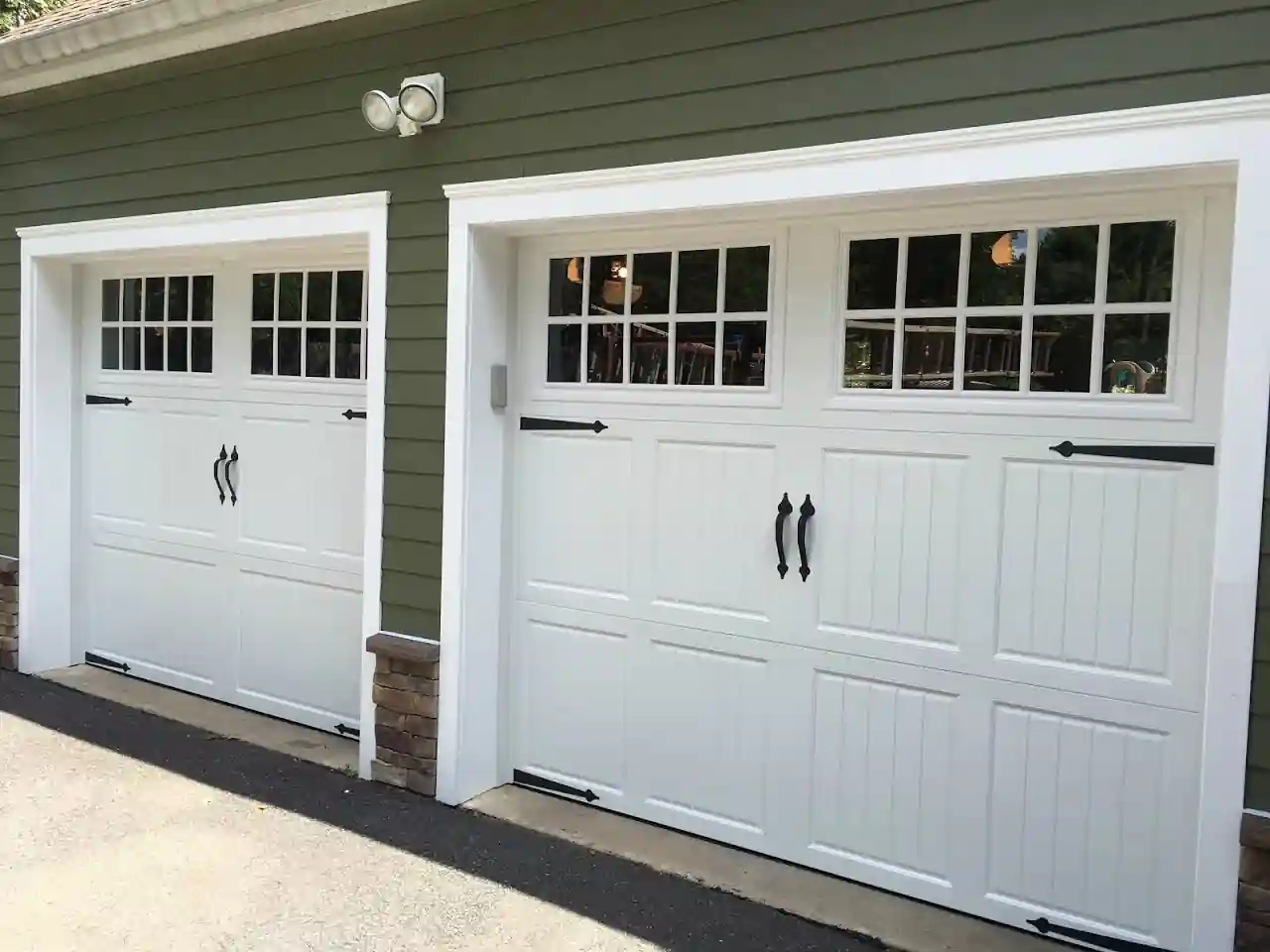
When most people think about garage doors, they picture the usual overhead roll-up style. But swing out garage doors are quietly making a big comeback — and for good reason. These classic double doors don’t just look beautiful; they completely transform how your garage functions and how your home feels from the curb.
Unlike traditional sectional doors that eat up ceiling space and require bulky tracks, swing out doors open like French doors. That simple difference creates major advantages in both form and function. For homeowners designing a 2 car garage with apartment above or a 3 car garage with apartment above, this change is more than aesthetic — it’s strategic.
🎯 Key Reasons They’re a Game-Changer:
- More Interior Space: Because swing out doors don’t slide overhead, you reclaim ceiling space for storage racks, lighting, or loft areas.
- Better Curb Appeal: Their carriage-style design instantly adds charm and timeless character to any home façade.
- Easier Customization: Materials, window inserts, colors, and hardware can be tailored to match your architecture.
- Improved Natural Light: With optional window inserts, your garage feels brighter, more welcoming, and even energy-efficient.
- Less Maintenance on Tracks: No heavy torsion springs or track rollers to constantly adjust or repair.
🧭 Pro Tip: If you’re planning a multi-purpose garage (think garage with apartment above or even a small workshop), consider pairing swing out garage doors with a wall mounted garage vacuum and built-in shelving. You’ll create a clean, organized, and flexible space that’s easy to maintain and a joy to use.
Secret #1: Classic Charm with Modern Appeal
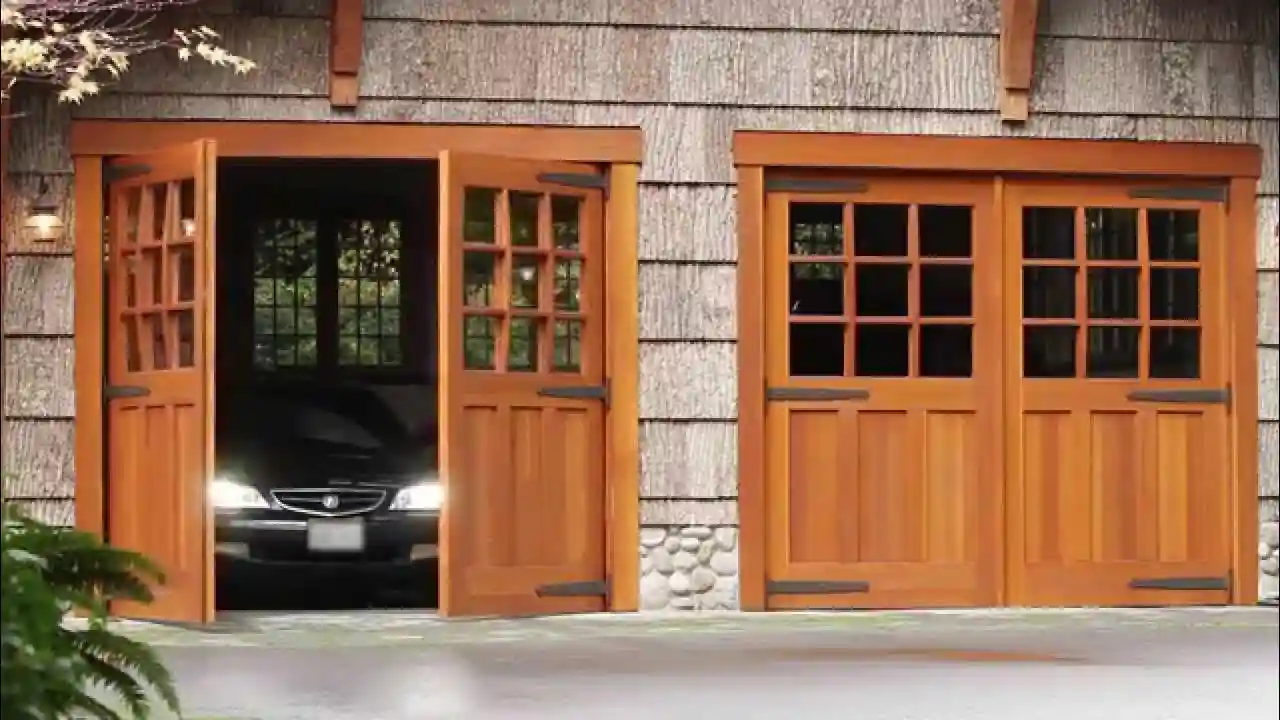
Here’s the first thing worth knowing: Swing Out Garage Doors didn’t just pop up out of nowhere. They’re deeply rooted in history. Long before overhead doors and automatic garage door openers became the norm, people relied on carriage-style garage doors.
These doors swung open wide to let horse-drawn carriages pass through, which is why you’ll often hear them called “carriage doors.” There’s something quietly romantic about that connection to the past — like adding a little heritage right into your home.
But history alone doesn’t keep a garage warm in winter. That’s where the modern updates come in. Today, you’ll find insulated door panels filled with materials like polystyrene or polyurethane foam, sturdy strap hinges built with bronze bushings, and weatherstripping systems that actually keep the cold out. You can even find models with Miami-Dade certification for storm protection, which means these aren’t just pretty doors; they’re built tough.
A lot of homeowners like the idea of mixing vintage style with modern convenience. For example:
- Authentic wood carriage doors give you that old-world look, but many now come with rigid insulation and a torsion box door frame to prevent warping.
- If you want low maintenance, steel insulated panels or composite overlays can mimic wood grain without needing constant refinishing.
- Automatic garage door openers — from brands like LiftMaster or Precision Garage Door Service — can now swing these heavy doors open with just a remote tap, so you don’t sacrifice convenience for charm.
💡 Pro Tip: If you’re aiming for a true vintage aesthetic, ask your installer about hardware options. Things like heavy-duty strap hinges, decorative h hinges, or even clear insulated glass units with grid inserts can make a huge difference in how authentic the final look feels.
So yes, you can absolutely get that vintage carriage look — but without the drafty gaps, sticky hinges, or endless upkeep that homeowners once had to endure. It’s a classic style reimagined for today’s living.
Secret #2: The Material Matters
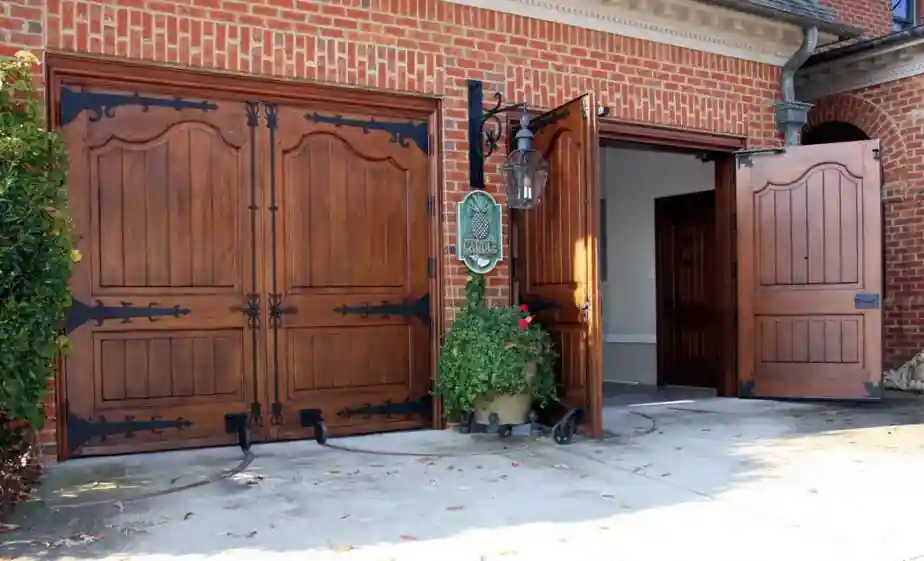
If you’ve ever shopped for garage doors — or even wandered through the aisles at Home Depot just to compare — you know the material really sets the tone. A Swing Out Garage Door made of wood feels completely different from one built with steel or fiberglass. Each one tells a different story, and each comes with a different level of maintenance, insulation, and, of course, price.
Here’s a breakdown of the most common options:
| Material | Pros | Cons | Best For |
|---|---|---|---|
| Wood (Doug fir, Redwood, Stain-grade panels) | Authentic carriage-house look, customizable, heritage appeal | Needs regular refinishing, can warp without torsion box frame | Vintage charm, historic homes |
| Steel (insulated panels, steel tubing) | Strong, secure, less maintenance, can mimic wood grain | May dent, can rust if not coated | Modern homes, high-security needs |
| Aluminum | Lightweight, affordable, rust-resistant | Not as strong as steel | Budget-friendly garage door projects |
| Fiberglass/Composite | Resists rot and insects, low maintenance | Can fade or crack over time | Coastal climates, eco-conscious buyers |
| Glass/Aluminum mix | Contemporary look, natural light | Less privacy, higher price | Modern design homes, facades with flair |
Some homeowners even combine materials — like steel core doors with wood overlays — to get the durability without losing the aesthetic.
Now, if you’re planning something bigger like a 2 car garage with apartment above, the material choice becomes even more important. Wood or composite might offer better insulation and noise reduction for the living space upstairs. Steel insulated panels with foam board or rigid insulation can also help maintain thermal efficiency, which makes those apartments more comfortable (and energy bills less shocking).
💡 Pro Tip: If you’re unsure, start with the climate. Live in snow country? Go for insulated wood carriage doors with arctic grade bulb weatherstrip. Coastal area? Aluminum and fiberglass hold up better against humidity and salt air.
And yes, eco-friendly garage doors are on the rise too. Many companies now offer LEED documentation, recycled materials, and Sherwin-Williams Paint finishes that are low-VOC. So, you don’t just choose a door; you’re making a long-term investment in durability, maintenance, and even environmental impact.
Secret #3: Space-Saving or Space-Hungry?
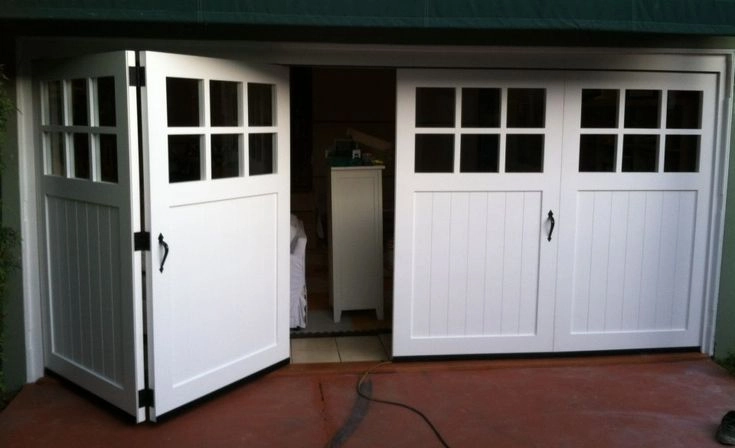
Here’s a funny thing about swing-out doors — they look simple, but space planning can get tricky. Unlike roll up garage doors or bifold garage doors that move overhead, these swing out doors literally swing wide into your driveway. That means you need clearance. More than you might think.
- For a standard single swing-out door, expect to leave at least 5–6 feet of open driveway space in front.
- For double carriage-style garage doors (common on a 2 car garage), you’ll need closer to 8–10 feet of free space so they can swing fully.
If your home sits in a quiet rural area with a long driveway, no problem. But in tighter neighborhoods — city lots or townhouses — it can be a dealbreaker. Imagine your doors trying to swing open while your car is parked a little too close, or worse, while traffic squeezes past.
Here’s a quick comparison:
| Door Style | Space Required | Best Suited For |
|---|---|---|
| Swing Out Garage Doors | 5–10 ft clearance in front | Wide driveways, rural homes, larger properties |
| Roll Up Garage Doors | Minimal clearance | City homes, narrow driveways |
| Folding / Bifold Garage Doors | Some clearance but less than swing | Mid-size driveways, modern facades |
| Sliding Barn Doors | Clearance on the side, not in front | Barn conversions, industrial or rustic homes |
So, are they practical for city homes? Honestly, maybe not always. But there are creative workarounds. For instance, if you’re designing a garage with man door access (a side entry), you won’t need to swing the big doors open every time. Or, if you’re set on the swing style but have limited space, bifold garage doors that mimic the swing-out look can be a compromise.
Side note — I once saw a carriage door project in an older neighborhood where they built a shorter outswing footprint (half-size swing panels that folded back neatly). It looked like a slice of history but worked for a narrow lot. Not perfect, but clever.
💡 Pro Tip: Before you fall in love with a specific garage door design, park your car in the driveway, open the trunk, and measure. You’d be surprised how often a dream design collides with real-life clearance needs.
Secret #4: Security You Can Count On
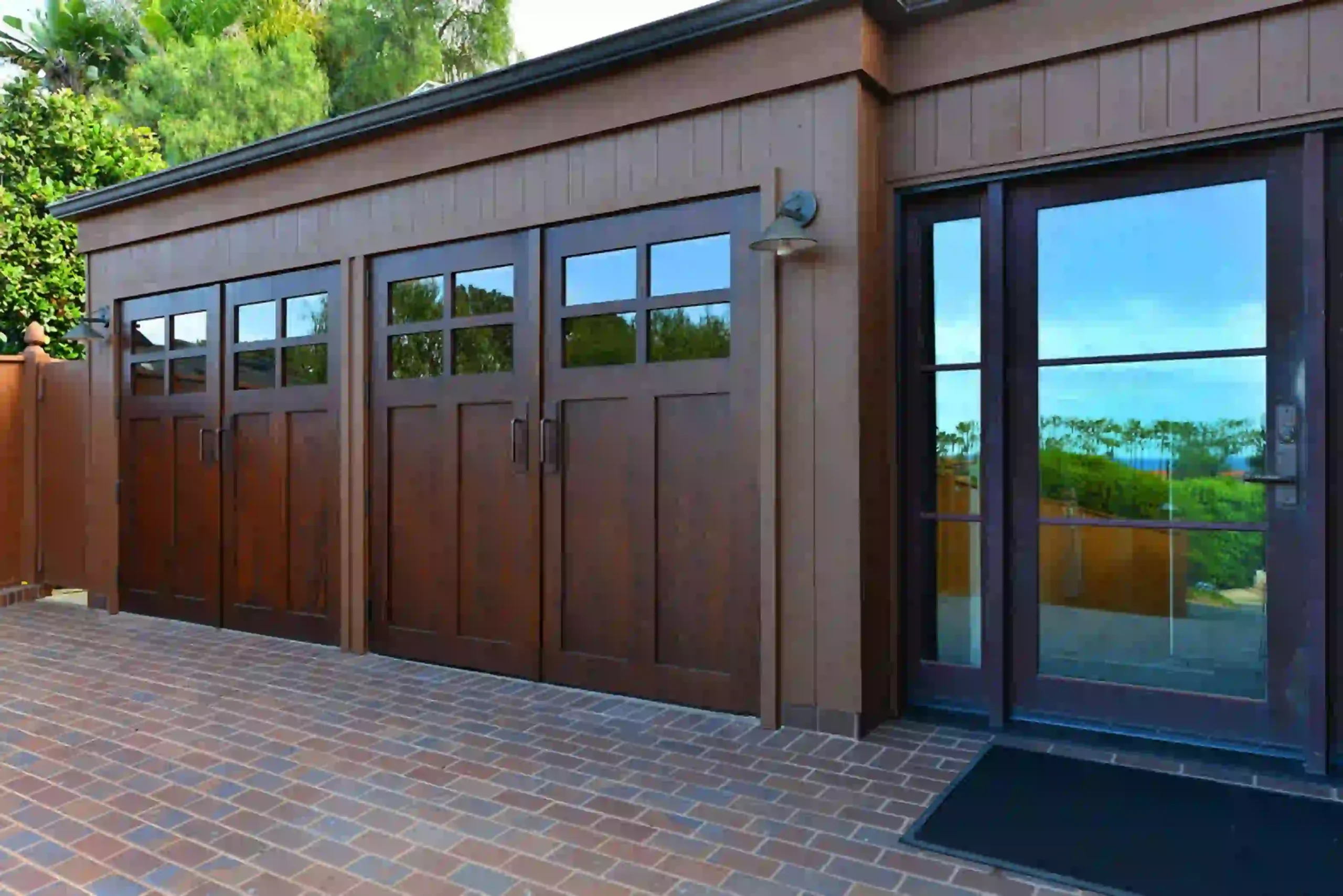
One of the most underrated things about Swing Out Garage Doors is security. People often think roll up garage doors are stronger because of their bulk, but in reality, swing-out doors can be harder to force open. Why? It comes down to the way they’re built and how the hardware locks into the jamb system. With heavy-duty strap hinges, angle iron reinforcements, and multi-point locking, these doors don’t just look solid — they are solid.
Here are some of the most common security features you’ll find:
- Traditional carriage bolts that secure into the threshold and jamb system.
- Smart locks integrated with automatic door opener systems for remote control via phone.
- Deadbolt-style latches combined with foam compression weatherstripping, which not only seals the door but also tightens the lock.
- Safety sensors and automatic garage door openers that stop the door if something (or someone) is in the way.
If you live in a large home with multiple vehicles — say, a 3 car garage with apartment above — security becomes even more important. Not only are you protecting your cars, but also any storage or living space above the garage. Adding insulated door panels with reinforced steel tubing makes it tougher for intruders, while automatic swing out garage doors with LiftMaster door operators or similar brands allow you to monitor everything remotely.
Here’s a quick look at how swing-out compares to other types:
| Garage Door Style | Security Level | Notes |
|---|---|---|
| Swing Out Garage Doors | High | Multi-point locks, harder to pry open |
| Roll Up Garage Doors | Medium | Secure if reinforced, but can be forced upward |
| Sliding Barn Doors | Medium | Strong but needs good hardware to prevent lifting |
| Folding Garage Doors | Medium-High | Depends on locking system and panel strength |
💡 Pro Tip: If you’re upgrading, ask your installer about smart garage door security kits. Some include cameras, motion sensors, and integration with systems like Google Home or Alexa. It’s peace of mind, especially if you’re away often.
Secret #5: Energy Efficiency and Insulation
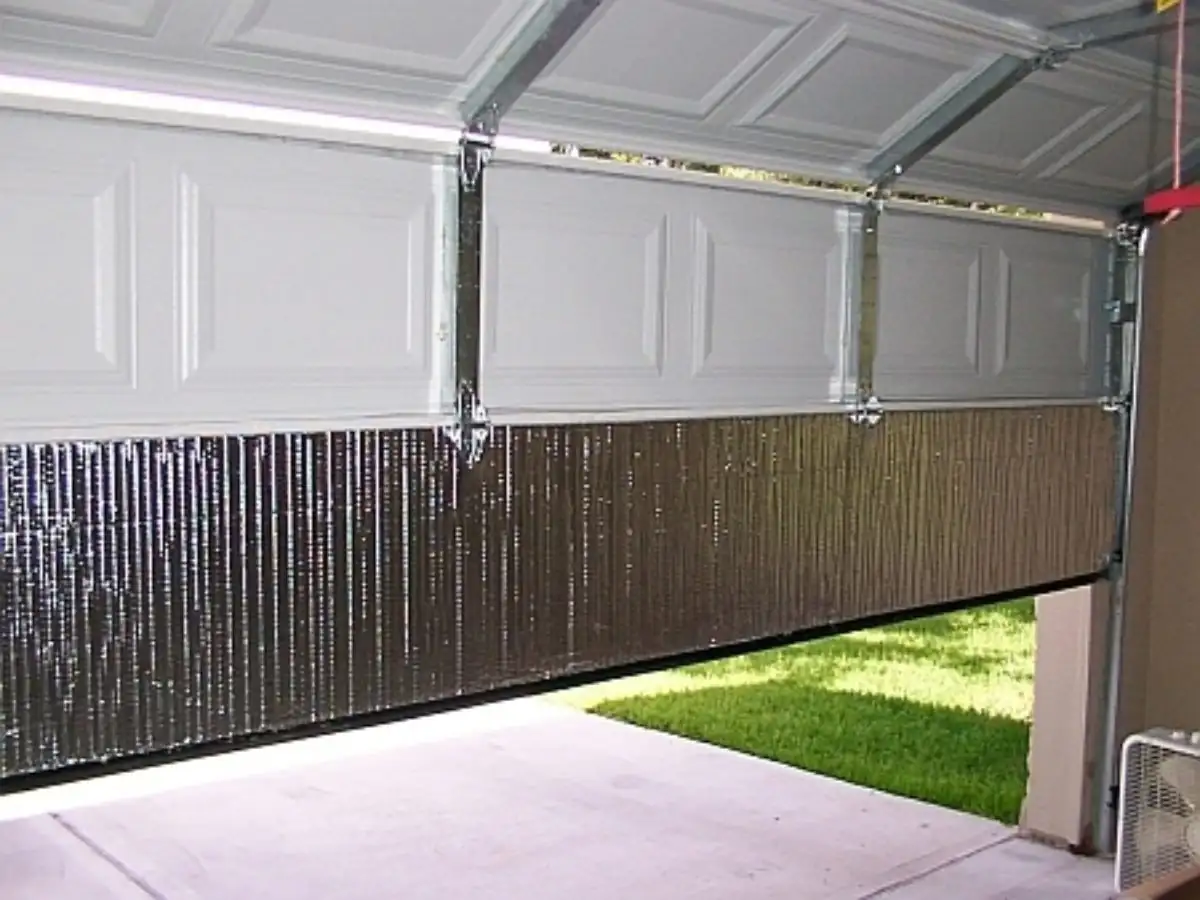
It’s easy to underestimate how much your garage door impacts your energy bill. Think about it — your garage is often the biggest uninsulated space in your home, and if you’ve got living quarters like a 3 car garage with apartment above, insulation isn’t just a luxury, it’s a necessity.
Swing-out doors can actually be more energy-efficient than some overhead models, simply because they close with tighter seals when fitted with quality weatherstripping. Foam compression weatherstrip, neoprene sweeps, and arctic grade bulb weatherstrip all work together to keep drafts and moisture out. Pair that with insulated panels, and you’ll notice a difference in heating and cooling costs.
Common insulation materials in swing-out doors include:
- Polystyrene foam boards (affordable, decent R-values).
- Polyurethane rigid insulation (higher R-values, better thermal efficiency).
- Torsion box construction filled with rigid foam, which keeps the door warp-free for decades.
Here’s a simple breakdown of insulation choices and their R-values:
| Insulation Type | Average R-Value | Notes |
|---|---|---|
| Polystyrene (foam board) | R-6 to R-9 | Budget-friendly, lightweight |
| Polyurethane (spray/rigid) | R-10 to R-18 | Best thermal efficiency, adds strength |
| Fiberglass batt insulation | R-3 to R-7 | Less common in modern doors |
If you’re replacing old doors, upgrading to insulated garage doors with foam board or polyurethane can actually reduce your annual energy costs. And if you’re in snow country, pairing that with insulated glass window inserts keeps the natural light without sacrificing warmth.
💡 Pro Tip: When shopping, don’t just ask about insulation — ask about R-values. Higher isn’t always better if your walls or roof aren’t insulated, but for garages with living spaces above (like that apartment setup), aim for at least R-12 or higher to keep it comfortable year-round.
Secret #6: Style Customization Like No Other
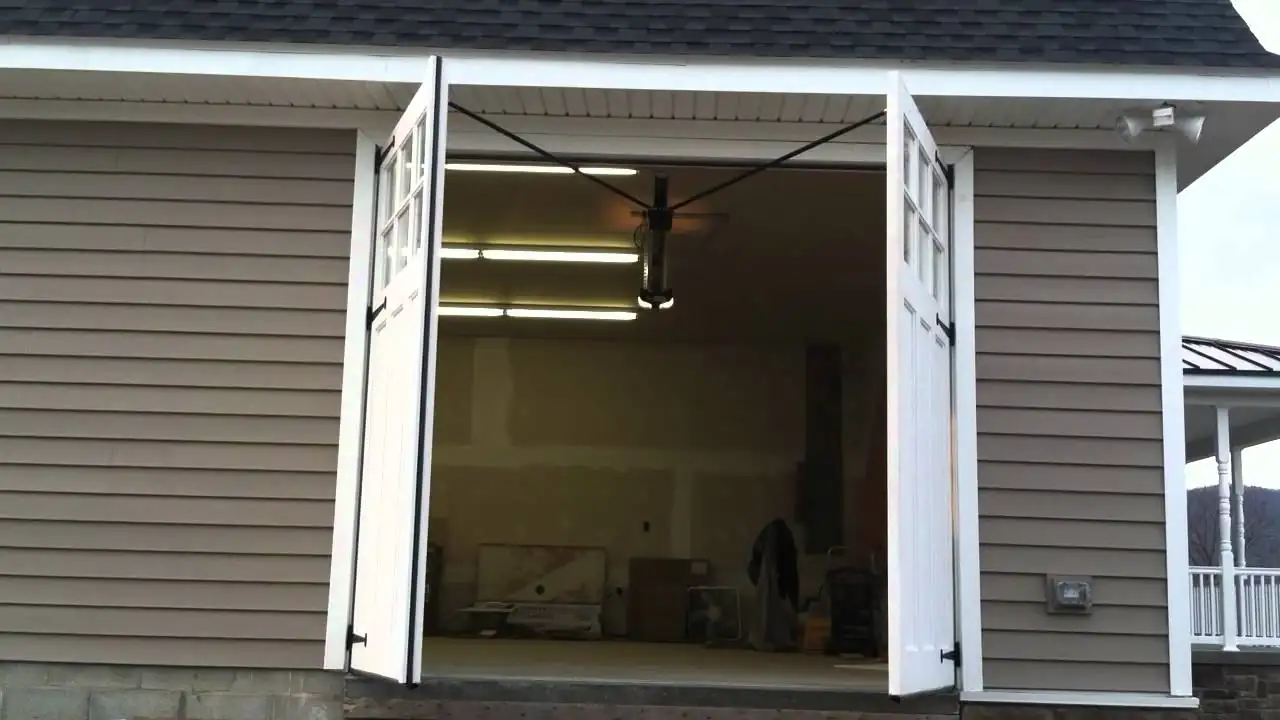
Here’s the fun part. With Swing Out Garage Doors, you aren’t stuck with a cookie-cutter design. Unlike many roll up garage doors that all kind of look the same, swing-out doors invite creativity. Think of them almost like furniture for your home’s exterior — you can pick the materials, finishes, hardware, and even window inserts until it matches your vision.
A few customization options homeowners love right now:
- Panel Styles: Flat, beadboard, or raised panel carriage designs.
- Surface Materials: Paint-grade plywood, stain-grade redwood, or even composite overlays.
- Hardware Choices: Strap hinges, h hinges, bronze bushings, or sleek strapless offset hinges for a modern twist.
- Window Inserts: Clear insulated glass units, frosted panes, or decorative grids.
- Color Selector Tools: Many companies (like Clopay or Evergreen Carriage Doors®) now let you preview paint finishes online.
And here’s a table with some of the most popular design pairings for 2025:
| Home Style | Garage Door Look | Details |
|---|---|---|
| Colonial / Heritage | Authentic wood carriage doors | Strap hinges, stained finish, window inserts |
| Modern Farmhouse | Overlay carriage garage doors | White paint, black hardware, crossbuck panels |
| Contemporary / Urban | Steel insulated panels + glass | Aluminum retainer, frosted insulated glass |
| Coastal Home | Fiberglass composite with bright Sherwin-Williams paints | Salt-resistant hardware, light pastel finish |
Side note: I once noticed a house near University Place Garage Cambridge that had swing-out doors with oversized clear glass inserts. The building itself wasn’t fancy, but those doors completely changed the façade — almost gave it a loft-style vibe in the middle of a pretty traditional neighborhood. Just goes to show how much garage door designs can redefine a property.
💡 Pro Tip: If you’re torn between stain-grade and paint-grade, think long-term maintenance. Stain-grade (like redwood or Doug fir) shows off natural grain but needs refinishing. Paint-grade plywood or composite overlays are easier to keep fresh with a new coat every few years.
Secret #7: Automation and Technology
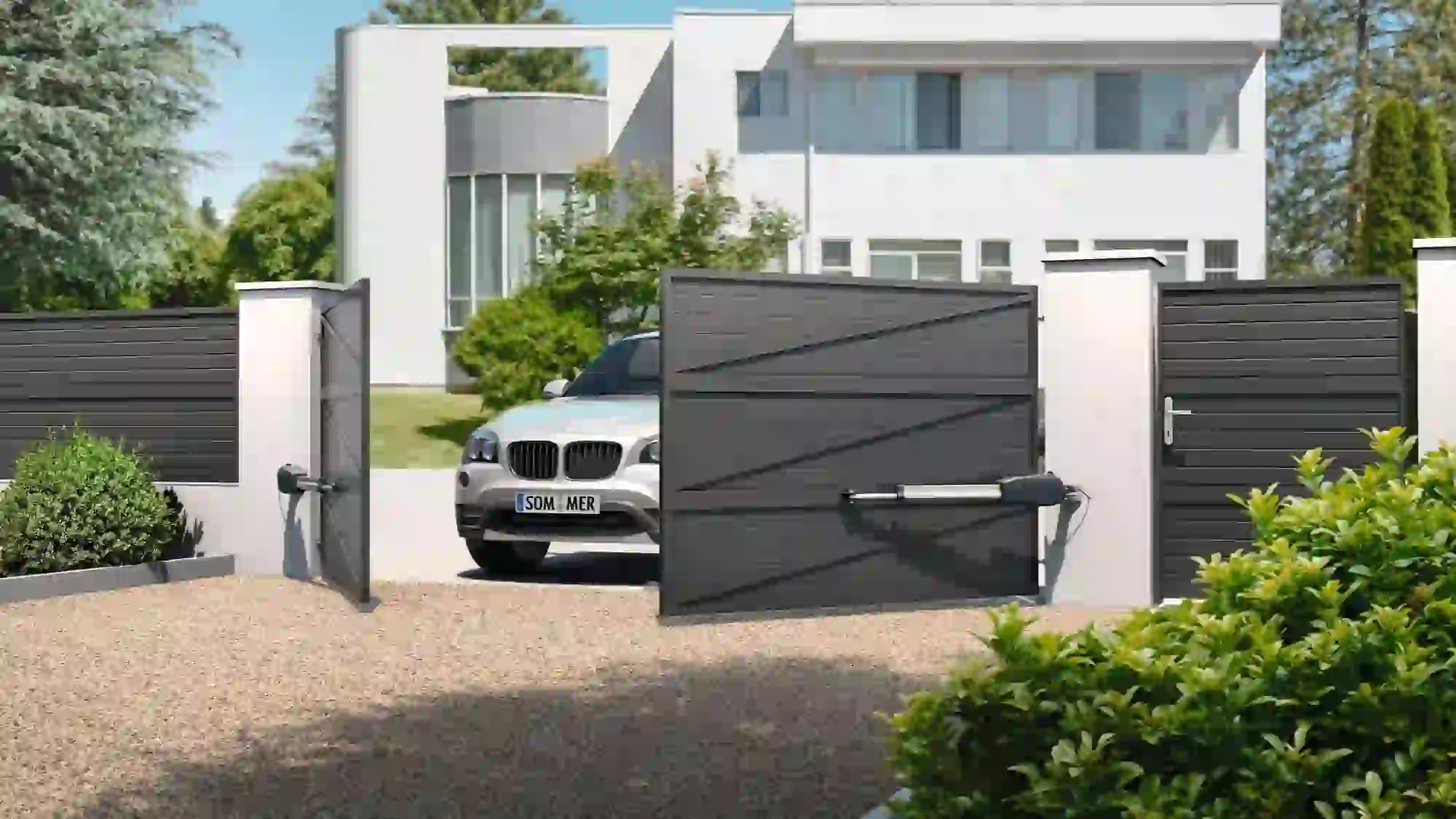
Now, here’s where people are usually surprised. They hear “swing out” and immediately imagine heavy wooden panels that creak open by hand. But nope — automatic swing out garage doors are a thing, and they’re honestly a game-changer. With modern openers, you can swing open even the heaviest authentic wood carriage doors with the push of a button.
Options for automation include:
- Automatic Garage Door Openers (LiftMaster door operators are among the most popular).
- Remote Operation: Remote controls or smartphone apps for quick access.
- Safety Sensors: Stop the door if it detects kids, pets, or objects.
- Smart Features: Integration with Alexa, Google Home, or Apple HomeKit.
Here’s a cost snapshot to compare automation setups:
| Automation Type | Approximate Cost Range | Best For |
|---|---|---|
| Standard Swing-Out Opener | $800 – $1,200 | Single garage doors |
| Heavy-Duty for Carriage Doors | $1,500 – $2,500 | Large or authentic wood carriage doors |
| Smart Garage Opener Systems | $200 – $600 add-on | Remote access, app control |
It’s not cheap, but if you’ve already invested in beautiful carriage-style garage doors, automation makes daily life smoother. And if you’re looking at a larger build like a 3 car garage with apartment above, it’s almost a must — nobody wants to manually swing open three oversized doors in the middle of winter.
💡 Pro Tip: When installing automatic door opener systems, ask about strap hinges vs. weld-on hinges. Some operators work better with heavy-duty strap hinges, while others are designed for strapless offset hinges. Getting the right pairing means fewer breakdowns and smoother operation.
Secret #8: Maintenance Secrets Pros Don’t Tell You
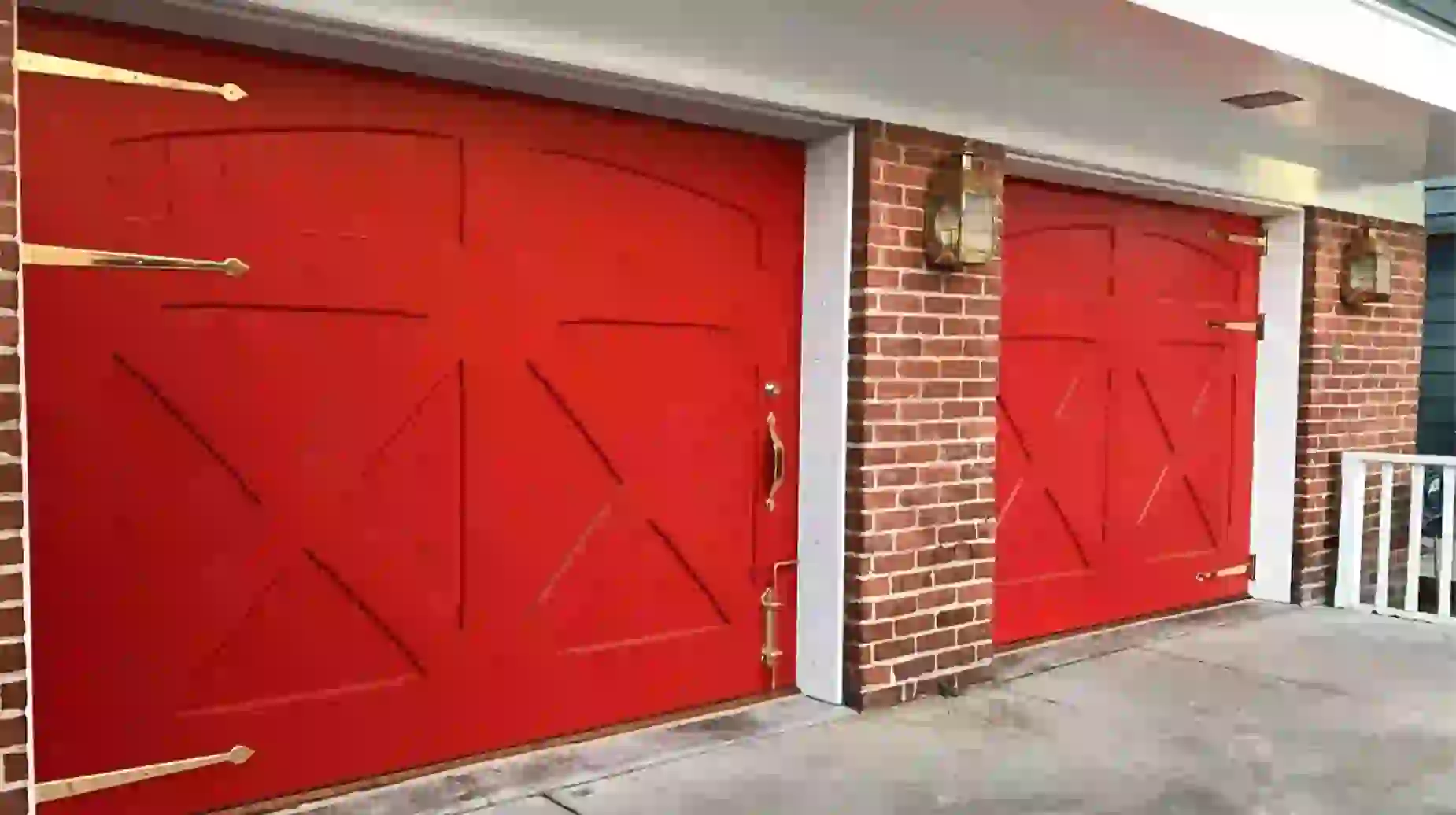
Here’s the part no one really wants to think about: upkeep. Even the most beautiful Swing Out Garage Doors need regular care, especially if they’re made from authentic wood. But the good news is, a little attention goes a long way.
Typical maintenance checklist:
- Lubricate hinges and hardware every 6 months (strap hinges, h hinges, or weld-on hinges).
- Repaint or re-stain stain-grade panels every 2–4 years to protect against weather.
- Inspect weatherstripping — foam compression weatherstrip, neoprene sweeps, and arctic grade bulb seals wear down over time.
- Clean panels and glass inserts with mild soap and water. Avoid harsh chemicals that strip finishes.
- Check alignment of jamb system and door stops so panels close flush.
And here’s where convenience comes in. Having a wall mounted garage vacuum makes the job easier. It’s one of those little upgrades that saves you from dragging a heavy shop vac around while trying to clear dust, cobwebs, or sawdust near your door’s threshold. Especially if you have insulated door panels or window inserts — keeping dirt away helps seals and finishes last longer.
For wood carriage garage doors, pros often recommend a torsion box door construction with rigid insulation to reduce warping. If you already have this setup, maintenance is easier, but you’ll still need seasonal checks. Steel insulated panels or composite overlay carriage-style doors? Much lower upkeep — mostly just cleaning and lubrication.
💡 Pro Tip: Keep a small logbook. Write down each time you lubricate, clean, or repaint your doors. It sounds silly, but it helps you spot patterns (like weatherstripping wearing out every winter). That way you can budget for replacements before problems sneak up.
Secret #9: Cost Breakdown & Budget Planning
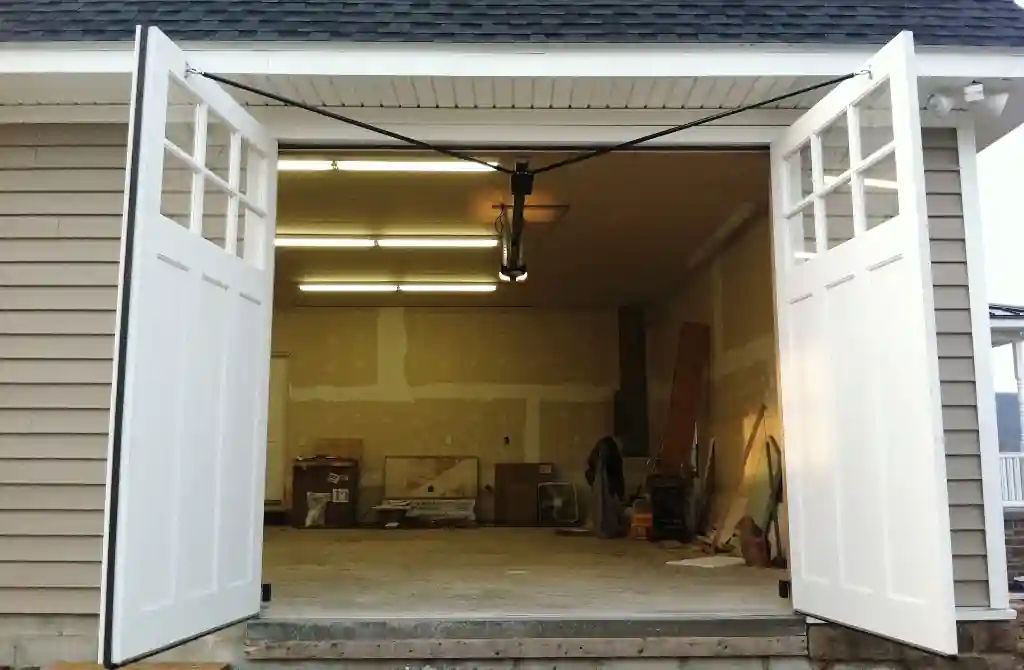
Now, let’s talk money — because, honestly, that’s what most homeowners want to know upfront. Are Swing Out Garage Doors more expensive than roll up garage doors or overhead doors? In most cases, yes. But they can also add enough curb appeal and durability to justify the investment.
Here’s a ballpark breakdown:
| Material & Style | Price Range (Door Only) | Installed Cost Estimate |
|---|---|---|
| Standard Wood Swing Out Garage Doors | $1,500 – $3,500 | $3,000 – $6,000 |
| Steel Insulated Carriage-Style Doors | $1,200 – $2,800 | $2,500 – $5,000 |
| Custom Authentic Wood Carriage Doors | $4,000 – $8,000+ | $6,000 – $12,000 |
| Fiberglass / Composite Overlay Doors | $2,000 – $4,500 | $4,000 – $7,500 |
| Automated Swing-Out Garage Door Opener Add-on | $800 – $2,500 | Included in above ranges |
Long-tail searches like swing out garage doors prices, swing out garage doors Home Depot, or even swing out garage doors for sale near me usually fall in these ranges, but the variance depends on things like insulation, surface material, and hardware.
One thing to keep in mind: a custom carriage door project — especially if you’re pairing it with a 2 or 3 car garage with apartment above — isn’t just about the upfront cost. Over time, insulated doors save on energy bills, sturdy materials cut down on repairs, and upgraded finishes extend lifespan.
Budget planning tips:
- Start with material — wood costs more to maintain long term than steel or composite.
- Factor in automation upfront. Adding it later often costs more.
- Don’t forget maintenance costs (paint, lubrication, weatherstripping replacement).
- Ask about warranty — some companies like Oxford Carriage Doors or Evergreen Carriage Doors® offer 50-year warp-free guarantees.
💡 Pro Tip: When comparing estimates, ask for a line-item breakdown. That way you see what’s door cost, what’s hardware, what’s installation, and what’s extras like insulation upgrades. It makes it easier to compare garage door companies near me without being misled by bundled prices.
Secret #10: Pair Swing Out Garage Doors with Smart Storage Solutions
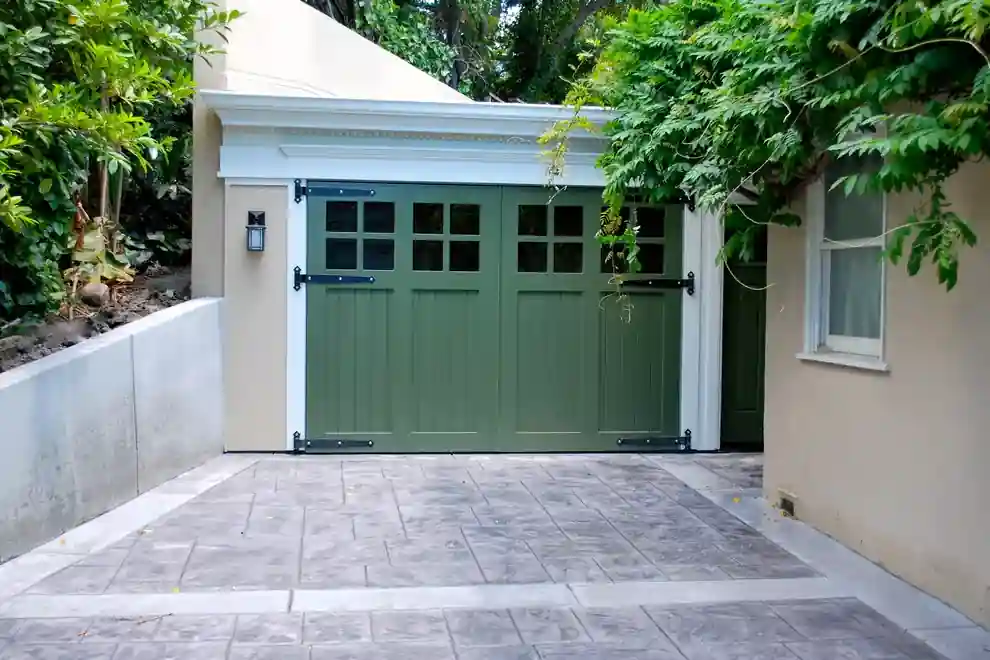
A beautiful garage deserves to be as functional as it is stylish. Homeowners often overlook storage, but pairing Swing Out Garage Doors with modern tools like a wall mounted garage vacuum or ceiling storage racks can transform your space into something truly efficient. Unlike traditional setups, swing-out systems don’t interfere with overhead storage, giving you more freedom to install shelves, hooks, or even sports equipment racks above.
Here are a few smart storage upgrades to maximize your garage:
- Install a wall mounted garage vacuum for easy cleaning.
- Add adjustable shelving to organize tools and seasonal gear.
- Use bike racks or pulley systems to free up floor space.
- Consider a compact workbench that folds against the wall.
Pro Tip: If you’re designing a 2 car garage with apartment above or even a 3 car garage with apartment above, swing-out doors free up ceiling space, making it easier to run HVAC, plumbing, or electrical lines to the upstairs living area without obstruction.
Final Thoughts
At the end of the day, Swing Out Garage Doors combine timeless beauty with modern practicality. They bring curb appeal, improve home value, and open up opportunities for smarter storage and multi-use spaces. Whether you’re upgrading a small suburban garage or planning a custom build with an apartment above the garage, these doors adapt perfectly.
From historic charm to modern smart features, swing-out doors prove they’re not just a design choice — they’re an investment in function and lifestyle. And when paired with extras like a wall mounted garage vacuum or a tidy storage system, your garage becomes more than just a parking spot. It transforms into a clean, efficient, and stylish extension of your home.
Final Takeaway: If you’re aiming for both elegance and functionality, swing-out garage doors are more than worth considering — they’re the ultimate upgrade every homeowner should know about.
🔑 Frequently Asked Questions
1. Are swing out garage doors better than traditional overhead doors?
Yes. Swing Out Garage Doors offer a timeless, elegant look and save ceiling space, making them ideal if you plan to add storage racks or even design a 2 car garage with apartment above. Overhead doors can sometimes limit these upgrades.
2. Can swing out garage doors be automated?
Absolutely. Modern swing-out doors can be fitted with smart openers that connect to apps, remote controls, or keypads. This makes them just as convenient as overhead doors but with added curb appeal.
3. How much do swing out garage doors cost?
Prices vary by size, material, and customization. On average, expect to pay between $1,500 – $6,000. A 3 car garage with apartment above may require larger or custom swing-out doors, which increases the budget.
4. Do swing out garage doors require more driveway space?
Yes. Since they swing outward, you’ll need clearance in front of your garage. This usually isn’t an issue unless you have a short driveway or park right up against the door.
5. Can I add windows to swing out garage doors?
Yes. Swing-out doors can be customized with garage door window inserts, glass panels, or decorative grilles. These features bring in natural light and enhance style, much like what you’d see in upscale areas near University Place Garage Cambridge.
6. Are swing out garage doors energy efficient?
They can be. Insulated swing-out doors keep garages warmer in winter and cooler in summer. This is especially useful if your garage has been converted into a living space or if you’ve built an apartment above the garage.
7. What is the best way to maintain swing out garage doors?
Regularly oil the hinges, check alignment, and clean them using mild soap. Adding a wall mounted garage vacuum makes cleanup of dust, dirt, and cobwebs inside the garage effortless.
8. Can swing out garage doors work with small garages?
Yes, but they’re best suited for medium to large spaces. For a single-car garage, compact swing-out doors work beautifully. For a 2 or 3 car garage with apartment above, larger double swing doors provide balance and style.
9. Are swing out garage doors secure?
Yes. They can be fitted with multi-point locking systems, smart locks, and reinforced hinges. They’re just as secure as overhead doors, if not more, because of their sturdy frame design.
10. Are swing out garage doors worth the investment?
Definitely. They improve home value, offer design flexibility, and enhance storage options. Homeowners find them especially beneficial when pairing with a wall mounted garage vacuum setup or designing multi-use structures like a 3 car garage with apartment above.

